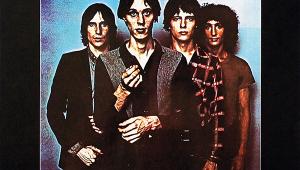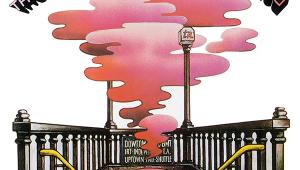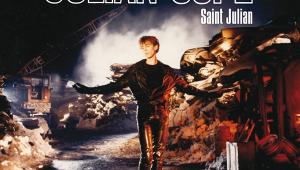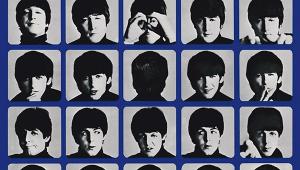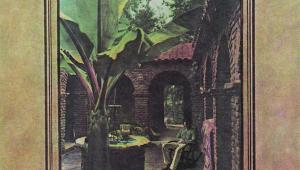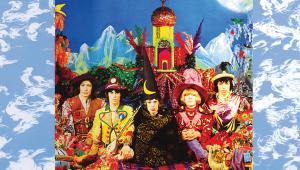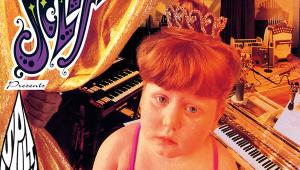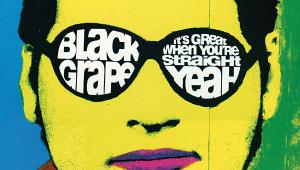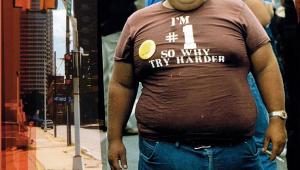Linda Perhacs: Parallelograms

Awhile back, I entered a vintage store on the outskirts of Indio, California, and happened to spy a vinyl copy of Parallelograms by Linda Perhacs. I lifted it gently down from the shelf. It was a first pressing. On Kapp. Gold-dust! And home it came with me.
Parallelograms, like many of the records that collectors drool about, sold close to zero copies when it was first released in 1970, which makes it seem especially precious as its initial commercial failure hints at the fact that there were most likely not that many LPs pressed up for retail. But the story behind how Parallelograms came into being is so extraordinary that it just adds sparkle to the magic.
Linda Perhacs, you see, was not a professional recording artist. She was a dental hygienist by day and a hippie on nights, weekends and holidays. Recently graduated from college, she worked in a dental practice on the edge of Beverly Hills, administering to famous clients such as Cary Grant and Henry Fonda. Her home, though, was in Topanga Canyon, a kind of Laurel Canyon substitute for those inclined to a libertine lifestyle but devoid of the dosh to hang with the nouveau elite.
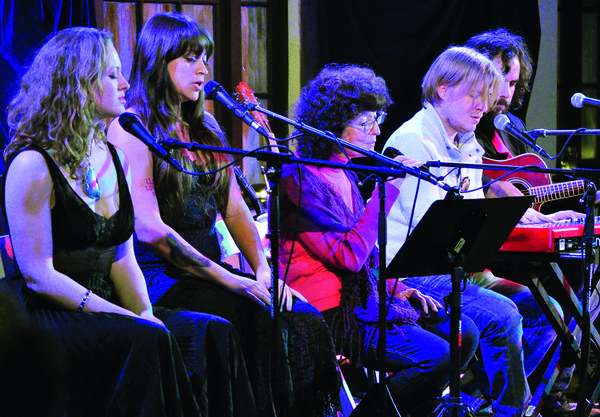
Linda Perhacs (centre) sings on stage in Seattle in 2014
Now You See It
Typical of many a youngster inspired by the likes of Bob Dylan and Joni Mitchell, Perhacs messed around with a guitar, writing songs she sang to and for herself. Atypically, though, Perhacs considered she had a special gift: 'I have a synesthesia-type capacity... and I can see and feel and hear things that would not be the average. I have sensitivities that are more acute than the normal', she later explained. What she meant was she could see sounds and hear colours. Or something like that.
One of the clients at the surgery where she worked was film composer Leonard Rosenman. His resume at this time boasted the soundtracks to East Of Eden and Rebel Without A Cause, and he would later win Oscars for Barry Lyndon and Bound For Glory. Something about Perhacs - her manner, the things she talked about - impressed him enough to enquire whether, apart from dentistry, she had any other strings to her bow.
Perhacs mentioned she liked to sing and play and that piqued Rosenman's curiosity as he, like many of the pre-Flower Power generation, was starting to feel out of touch and looking to clue himself in on the fresh new vibes. He asked to hear her songs. She made him a tape and he liked what he heard, duly inviting her to a composing session.
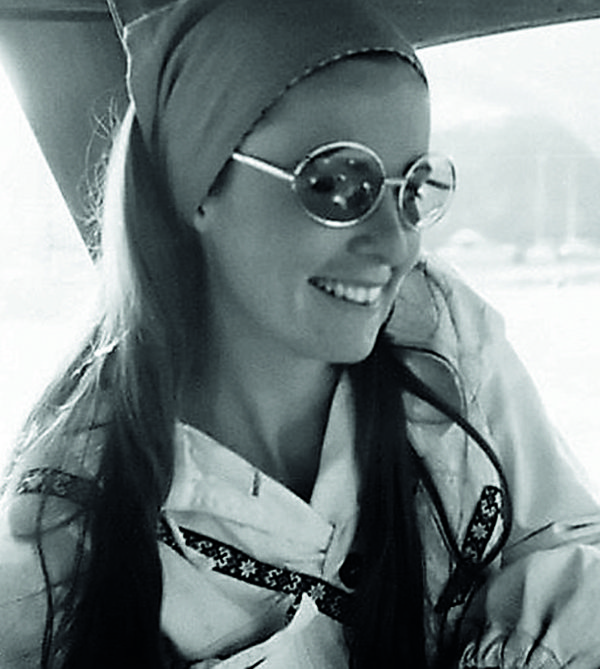
Kapp Records press shot of Perhacs from 1970
Light Fantastic
What happened next is like something out of Close Encounters Of The Third Kind or E.T. Perhacs was driving on the Ventura Freeway back from Rosenman's place just before midnight when she saw, 'lights dangling from the sky, like a rainbow... beautiful lights that were hard to describe...'.
She pulled off the freeway and stopped in a deserted gas station to sketch what she'd seen on a few scraps of paper before the experience faded from her memory. Back at home, she took a melody she'd been working out on a 12-string guitar and 'put it on the front end of that idea I was getting, to create a three-dimensional sound sculpture from the beauty I had just seen in the sky. I tried to translate the yellows and blues in terms of wavelengths and sounds'.
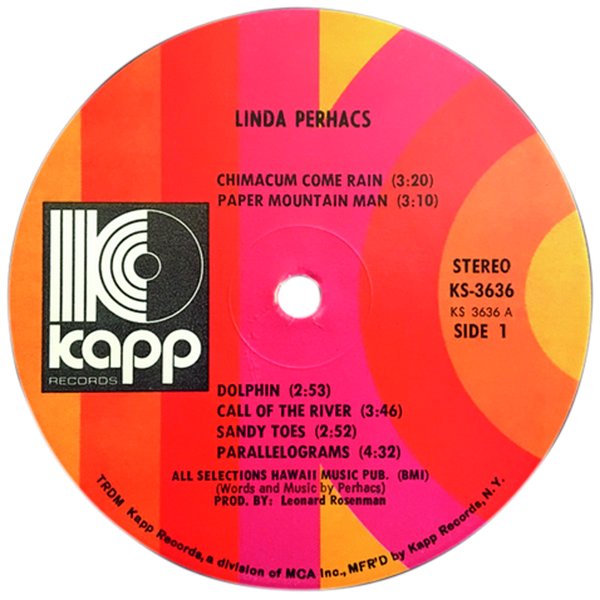
One And Done
I've no idea what that looked like nor what it all means. Rosenman, however, was convinced to parlay any leverage he had with MCA subsidiary Universal City Records to procure a small budget and studio time to record an LP which, when completed, was assigned to Kapp, an independent that had been purchased by the major from its founder, David Kapp, in 1967. So, Perhacs joined a roster that boasted Louis Armstrong, Fred Astaire, Burt Bacharach and Sonny & Cher at one time or another.
Unfortunately, the record company was flummoxed by the complexity of the album she delivered. They were looking for something radio-friendly, like Simon & Garfunkel, and she'd come up with this weird, though admittedly wonderful, album. Perhacs says today that they ruined it: 'The pressing was very bad. They stripped the sounds from the top, they removed the sounds from the lows and pressed and mixed it for AM radio, a thin sound, more like a telephone. When I heard my first vinyl, I threw it in the trash'. Disillusioned with the machinations of the music industry, Perhacs gave it all up and continued with her dentistry.
Folk Revival
As I said, nobody bought Parallelograms and I wouldn't have either were it not for the fact that it was just too brilliant and unique not to be (re)discovered. And so it was, some three decades later. In 2000 a CD arrives at Perhacs' home from Michael Piper, who was running a small company in Brooklyn. With the CD was a handwritten note: 'If this is the right Linda, I've been searching for you. Do you know people want this album? And if so, please call me'.
To cut a long fairytale short, Parallelograms had been rediscovered by vinyl crate diggers of the acid folk persuasion, and was granted the first of quite a few represses, the latest of which is the 180g we're featuring here. The title track is the centrepiece, delicately constructed around sublimely multi-tracked gossamer vocals reminiscent of Alice In Wonderland - everything is wonderful yet tinged with shadow and subliminal threat. The opener, 'Chimicum Rain', is cut from the same multi-coloured dream cloth, a spaced-out choral hymn to nature where Pan prances between the notes. 'Moons And Cattails' is similar but if anything even more witchy, cast in a light, jazzy hue. There are musical touch points - 'Sandy Toes' is like vintage Byrds fronted by Joni Mitchell - yup, that good! - while 'Paper Mountain Man' has Bobbie Gentry grooves.
The record's rediscovery coaxed Perhacs back into the studio. There are a couple more albums now - The Soul Of All Natural Things (2014) and I'm A Harmony (2017). Both are pretty good, but they're no Parallelograms. That's a true one-off.
Re-Release Verdict
First issued in 1970 on both vinyl and 8-track cartridge and co-arranged and produced by Leonard Rosenman, Linda Perhacs' debut album is now available as a limited edition 180g release from Elemental Music [700214], with the original artwork, Kapp Recordings labels and handwritten lyrics. The 11 tracks here are the same as those on the 1970 release, the 2003 CD reissue of Parallelograms on The Wild Places label [WILD005-RE] adding six unreleased/demo tracks. HFN
Sound Quality: 90%



